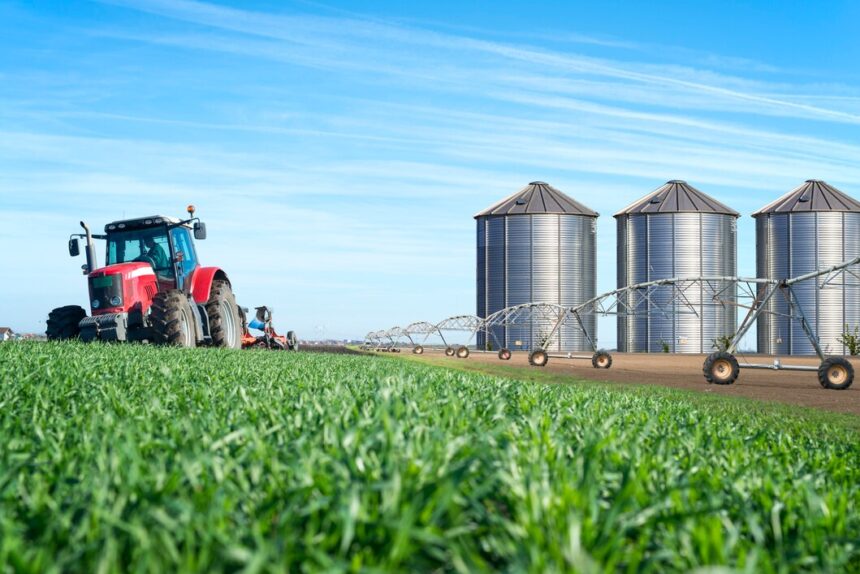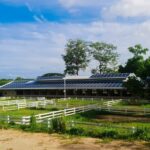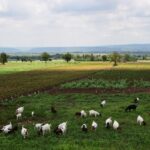Climate change poses one of the greatest challenges of our time, with rising temperatures, extreme weather events, and disruptions to ecosystems threatening the planet’s health and stability. In the face of this global crisis, innovative solutions are urgently needed to mitigate carbon emissions and build resilience to climate impacts. One such solution lies in farming for carbon sequestration, a practice that harnesses the power of agriculture to capture and store atmospheric carbon dioxide in the soil, plants, and biomass. In this article, we’ll explore how farming for carbon sequestration can play a vital role in addressing climate change and building a more sustainable future.
Understanding Carbon Sequestration:
Carbon sequestration is the process by which carbon dioxide (CO2) is removed from the atmosphere and stored in carbon sinks, such as forests, oceans, and soils. In agricultural systems, carbon sequestration occurs primarily through the uptake of CO2 by plants during photosynthesis, as well as through the incorporation of organic matter into the soil.
The Role of Agriculture:
Agriculture has the potential to be both a significant source of carbon emissions and a powerful carbon sink. On one hand, conventional farming practices such as tillage, deforestation, and the use of synthetic fertilizers release carbon stored in soils and vegetation into the atmosphere, contributing to global warming. On the other hand, regenerative agricultural practices that prioritize soil health, biodiversity, and carbon sequestration can help reverse this trend and mitigate climate change.
Principles of Carbon Farming:
Carbon farming encompasses a range of practices and techniques aimed at enhancing carbon sequestration in agricultural landscapes. These practices include:
- Agroforestry: Integrating trees and shrubs into agricultural systems to increase biomass production, enhance biodiversity, and sequester carbon in woody vegetation and soil organic matter.
- Cover Cropping: Planting cover crops such as legumes, grasses, and brassicas to improve soil structure, suppress weeds, and increase carbon inputs through root biomass and organic residues.
- No-Till Farming: Minimizing soil disturbance through reduced or no-tillage practices to preserve soil structure, organic matter, and microbial activity, thereby enhancing carbon storage in the soil.
- Crop Rotation and Diversification: Rotating crops and diversifying cropping systems to enhance soil fertility, suppress pests and diseases, and increase carbon inputs through the incorporation of diverse root systems and residues.
- Livestock Management: Implementing rotational grazing, silvopastoral systems, and holistic grazing practices to improve pasture health, increase carbon inputs, and enhance soil carbon storage in grasslands and rangelands.
Benefits of Carbon Farming:
Farming for carbon sequestration offers a range of environmental, economic, and social benefits, including:
- Mitigating climate change by removing CO2 from the atmosphere and storing it in soils and vegetation.
- Enhancing soil health and fertility through increased organic matter, nutrient cycling, and water retention.
- Improving biodiversity and ecosystem resilience by restoring habitats, conserving native species, and promoting agroecological diversity.
- Supporting sustainable livelihoods for farmers through diversified income streams, reduced input costs, and increased resilience to climate variability.
Challenges and Opportunities:
While carbon farming holds great promise for addressing climate change, it also faces several challenges, including knowledge gaps, technical barriers, and economic constraints. However, with the right policies, incentives, and support mechanisms in place, farmers can overcome these challenges and transition to more sustainable and regenerative agricultural practices that benefit both people and the planet.
Farming for carbon sequestration represents a powerful strategy for addressing climate change, promoting sustainable agriculture, and building resilience to environmental challenges. By adopting regenerative practices that prioritize soil health, biodiversity, and carbon storage, farmers can play a vital role in mitigating climate change and creating a more sustainable future for generations to come. As we confront the urgent threats posed by climate change, investing in carbon farming offers a path forward towards a healthier, more resilient planet for all.
Join 'Farmers Mag' WhatsApp Channel
Get the latest Farming news and tips delivered straight to your WhatsApp
CLICK HERE TO JOIN






